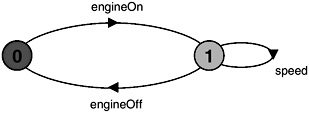1.2 The Modeling Approach
1.2 The Modeling Approach
A model is a simplified representation of the real world and, as such, includes only those aspects of the real-world system relevant to the problem at hand. For example, a model airplane, used in wind tunnel tests, models only the external shape of the airplane. The power of the airplane engines, the number of seats and its cargo capacity do not affect the plane’s aerodynamic properties. Models are widely used in engineering since they can be used to focus on a particular aspect of a real-world system such as the aerodynamic properties of an airplane or the strength of a bridge. The reduction in scale and complexity achieved by modeling allows engineers to analyze properties such as the stress and strain on the structural components of a bridge. The earliest models used in engineering, such as airplane models for wind tunnels and ship models for drag tanks, were physical. Modern models tend to be mathematical in nature and as such can be analyzed using computers.
This book takes a modeling approach to the design of concurrent programs. Our models represent the behavior of real concurrent programs written in Java. The models abstract much of the detail of real programs concerned with data representation, resource allocation and user interaction. They let us focus on concurrency. We can animate these models to investigate the concurrent behavior of the intended program. More importantly, we can mechanically verify that a model satisfies particular safety and progress properties, which are required of the program when it is implemented. This mechanical or algorithmic verification is made possible by a model-checking tool LTSA (Labeled Transition System Analyzer). Exhaustive model checking using LTSA allows us to check for both desirable and undesirable properties for all possible sequences of events and actions. LTSA is available from the World Wide Web (http://www.wileyeurope.com/college/magee). As it has been implemented in Java, it runs on a wide range of platforms, either as an applet or as an application program.
The models introduced in the book are based on finite state machines. Finite state machines are familiar to many programmers and engineers. They are used to specify the dynamic behavior of objects in well-known object-oriented design methods such as Booch (1986), OMT (Object Modeling Technique) (Rumbaugh, Blaha, Premerlani, et al., 1991) and, more recently, the all-encompassing UML (Unified Modeling Language) (Booch, Rumbaugh and Jacobson, 1998). They are also extensively used in the design of digital circuits – the original engineering use. For those not yet familiar with state machines, they have an intuitive, easily grasped semantics and a simple graphical representation. The state machines used in this book (technically, Labeled Transition Systems) have well-defined mathematical properties, which facilitate formal analysis and mechanical checking, thus avoiding the tedium (and error introduction) inherent in manual formal methods.
For instance, for the cruise control system described in section 1.1, we can model the various processes of the system as state machines. A state machine for the process responsible for obtaining the current speed is given in Figure 1.3. Starting from state(0), it indicates that once the engine is switched on, it transits to state(1) and can then repeatedly obtain a speed reading until the engine is switched off, when it returns to state(0). Other processes can be modeled similarly. We can compose the system from the constituent processes according to the proposed design structure, indicating the interactions between the processes. The advantage is that such models can be used to animate and check the behavior of the overall system before it is implemented. Figure 1.4 shows an animation of the model for the cruise control system. It clearly shows the problem encountered in our simulation: if the engine is switched off and on again when cruise control is enabled, the previous speed setting is resumed. Exhaustive analysis can be used to identify the problem under all possible situations. Furthermore, to help understand and correct the problem, the model checker produces the particular sequence of actions that led to it!

Figure 1.3: Speed input process.

Figure 1.4: Animation of the cruise control system.
Later chapters describe and illustrate how to provide and use such models to gain confidence in the correctness and validity of a proposed design. We illustrate how premature and erroneous implementations can be avoided by careful modeling and analysis. Further, we indicate how such models can be systematically transformed into Java programs. The cruise control system is fully described, modeled and implemented in Chapter 8.
Note that representing state machines graphically severely limits the complexity of problems that can be addressed. Consequently, we use a textual notation (Finite State Processes, FSP) to describe our models. The LTSA tool associated with the book translates FSP descriptions to the equivalent graphical description. The book itself presents the initial models in both textual and graphical forms to enable the reader to become familiar with the meaning of FSP descriptions. Technically, FSP is a process calculus – one of a family of notations pioneered by Milner (1989), Calculus of Communicating Systems (CCS), and Hoare (1985), Communicating Sequential Processes (CSP), for concisely describing and reasoning about concurrent programs. The difference from these notations is largely syntactic: FSP is designed to be easily machine readable. Like CCS and CSP, FSP has algebraic properties; however, it is used in this book primarily as a concise way of describing Labeled Transition Systems.
EAN: 2147483647
Pages: 162